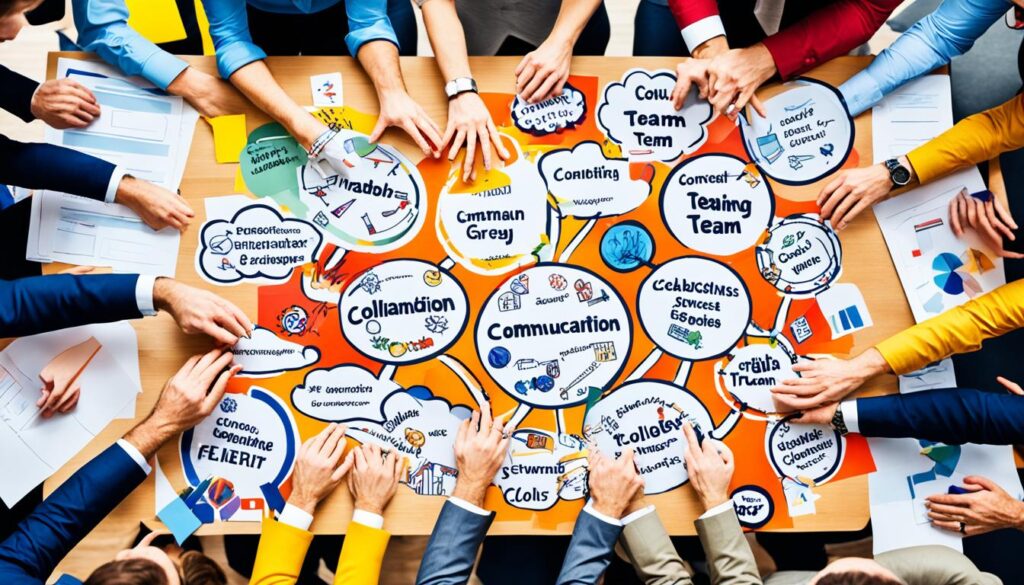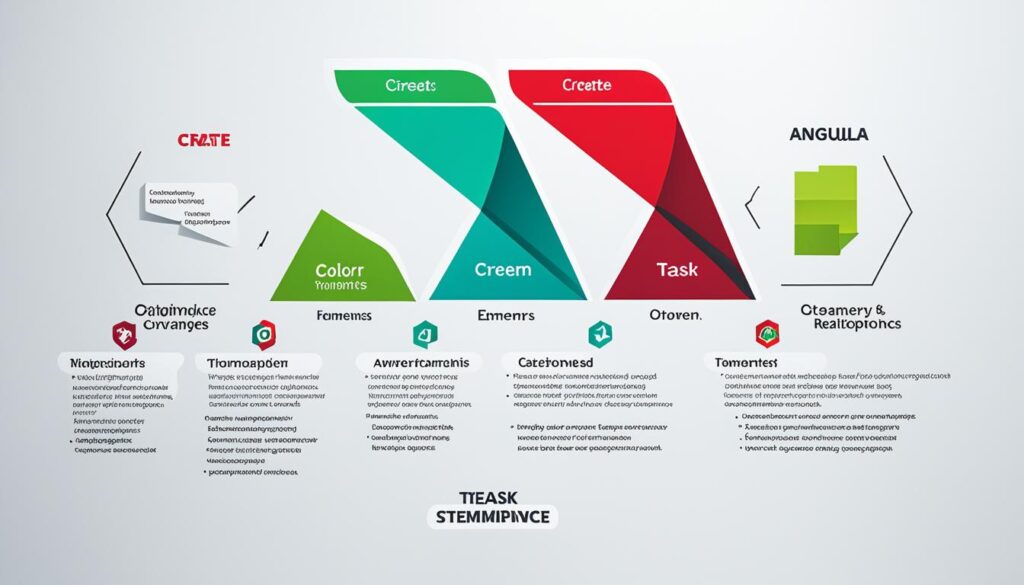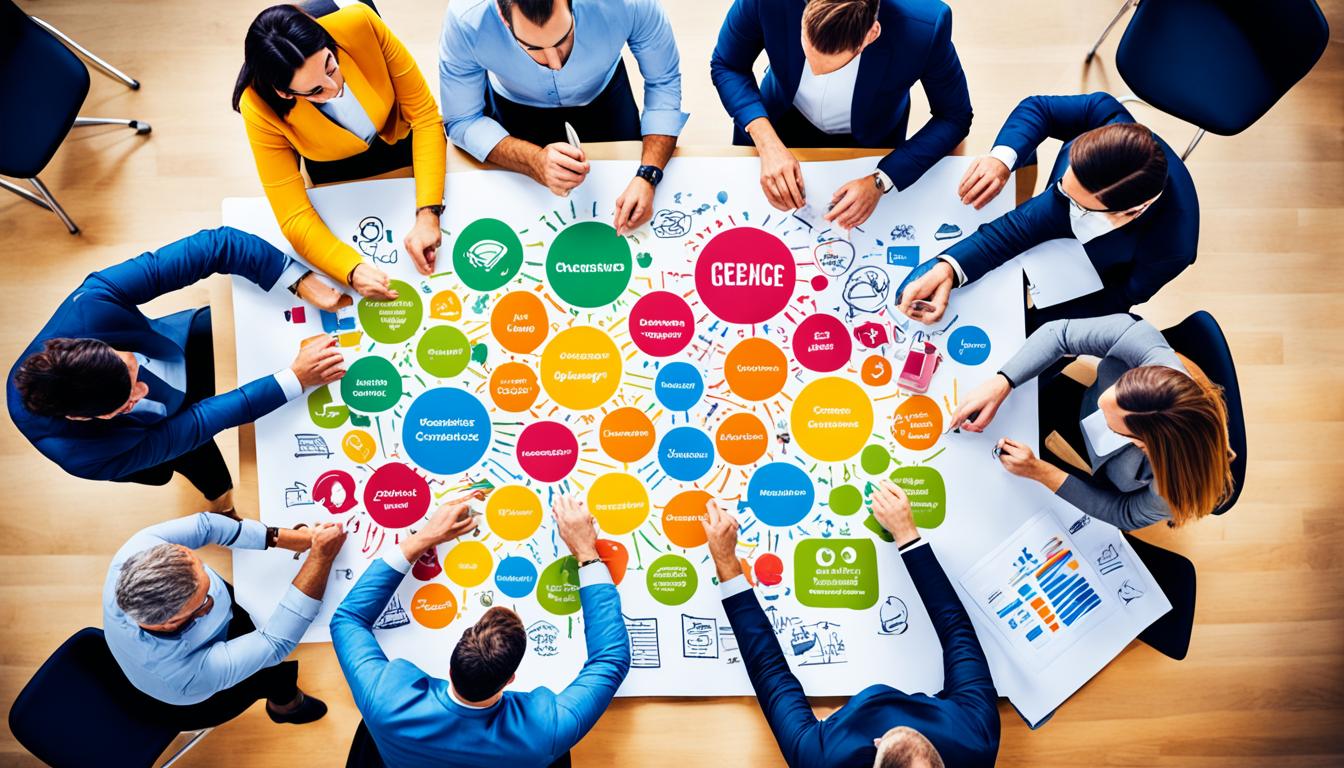Imagine a bustling office where employees from different departments gather for a crucial meeting. Sarah, the marketing specialist, eagerly shares her ideas, while John, the operations manager, listens intently. In the corner, Lisa, the finance expert, takes notes for future analysis. Despite their diverse backgrounds and roles, this team works seamlessly towards a common goal, their interactions dynamic and collaborative.
This relatable scenario exemplifies the essence of team dynamics defined in the workplace. It signifies the intricate patterns of communication, cooperation, and collaboration among individuals within a team. These dynamics encompass both formal and informal relationships, shaping how teams function and perform. Understanding team dynamics is crucial for fostering a positive work environment and enhancing overall productivity. By recognizing the different roles and personalities within the group, leaders can tailor their approaches to support collaboration and mitigate conflicts. Ultimately, a deep comprehension of these dynamics can lead to improved problem-solving and innovation as team members feel more valued and engaged in the process.
Effective team dynamics are the driving force behind successful workplaces, promoting collaboration, improving communication, enhancing performance, and fostering a positive work environment. By understanding and nurturing positive team dynamics, organizations can unlock the full potential of their teams and achieve their strategic objectives.
Key Takeaways:
- Team dynamics refer to the interactions, relationships, and behaviors within a team.
- Positive team dynamics enhance collaboration, communication, and performance.
- Understanding team dynamics is vital for achieving organizational goals.
- Effective team dynamics foster a high-performance culture and resolve conflicts.
- Nurturing positive workplace relationships is essential for success.
What is Team Dynamics at Work?
Team dynamics at work encompass the interactions, relationships, and behaviors among individuals within a team. It goes beyond the surface level and delves into how team members collaborate, communicate, and influence one another, ultimately impacting overall team performance and effectiveness. Understanding team dynamics in organizations is crucial for fostering a positive work environment and enhancing productivity. By recognizing the strengths and weaknesses within a team, leaders can tailor their approaches to address conflicts and promote collaboration. Ultimately, a strong grasp of team dynamics can lead to more innovative solutions and improved performance outcomes.
Team dynamics are shaped by various elements such as communication patterns, power structures, roles and responsibilities, conflict resolution strategies, and the level of trust and psychological safety within the team. These dynamics are not limited to formal meetings or projects but extend to informal interactions and digital communication channels.
Understanding and managing team dynamics are pivotal for fostering collaborative, high-performing teams and achieving strategic objectives. By nurturing positive interactions, promoting effective communication, fostering collaboration, and creating a supportive team environment, organizations can optimize team performance and drive success.
Key Elements of Team Dynamics
Let’s explore some key elements that contribute to team dynamics at work:
- Communication Patterns: The way team members communicate, listen, and exchange information lays the foundation for effective collaboration and problem-solving.
- Power Structures: Understanding the distribution of power and authority within a team helps establish clear roles and responsibilities and promotes accountability.
- Roles and Responsibilities: Clearly defined roles and responsibilities ensure that each team member knows their tasks, which contributes to overall team productivity and efficiency.
- Conflict Resolution Strategies: Effective conflict resolution promotes healthy communication, prevents unresolved issues from escalating, and strengthens team cohesion.
- Trust and Psychological Safety: Building trust and fostering a psychologically safe environment enables team members to share ideas, take calculated risks, and be vulnerable without fear of judgment or reprisal.
“Team dynamics are the invisible forces that shape how a group of individuals work together and impact the overall team performance.”
— John Maxwell
Digital Communication and Team Dynamics
In today’s digital age, team dynamics extend beyond face-to-face interactions. Virtual teams rely heavily on digital communication channels such as email, instant messaging platforms, video conferences, and project management tools.
These channels can influence team dynamics, both positively and negatively. Effective utilization of digital communication tools enhances collaboration, promotes transparency, and supports remote team members. However, miscommunication, the lack of non-verbal cues, and information overload can also pose challenges to team dynamics.
Organizations need to adapt their approach to team dynamics to ensure effective communication and collaboration in both physical and virtual workspaces.
| Advantages of Digital Communication in Team Dynamics | Challenges of Digital Communication in Team Dynamics |
|---|---|
|
|
The Importance of Team Dynamics in the Workplace
Team dynamics play a crucial role in shaping the success and productivity of a workplace. Positive team dynamics enhance collaboration, improve communication, boost morale and motivation, enable effective conflict resolution, increase accountability, promote professional development, foster cultural understanding, build resilience to change, and contribute to a high-performance culture.
Organizations with positive team dynamics are more attractive to potential employees and tend to retain talent due to a supportive and engaging work environment. By nurturing positive team dynamics, organizations can unlock the full potential of their teams, foster innovation, and drive sustainable growth.
The Impact of Team Dynamics on Workplace Success
Collaboration is a key aspect of team dynamics that allows individuals to work together towards shared goals, combining their diverse skills and knowledge for optimal outcomes. Effective team dynamics also improve communication by establishing clear channels for sharing information, ideas, and feedback.
Positive team dynamics contribute to a workplace culture where individuals feel supported and valued, leading to higher job satisfaction and increased productivity.
When conflicts arise, team dynamics play a critical role in resolving them constructively. By fostering open communication and trust, team members can address conflicts proactively, finding mutually beneficial solutions and maintaining positive working relationships.
Furthermore, positive team dynamics encourage accountability, as team members hold themselves and each other responsible for their actions and contributions. This accountability creates a sense of ownership and drives individuals to perform at their best.
A high-performance culture is a natural outcome of positive team dynamics. When individuals feel valued, engaged, and empowered within their team, they are more likely to go above and beyond their roles, innovate, and achieve outstanding results.
- Collaboration
- Communication
- Conflict resolution
- Accountability
- Professional development
- Cultural understanding
- Resilience to change
Investing in developing and nurturing positive team dynamics is essential for organizations that aim to create a productive, engaging, and harmonious work environment. By promoting collaboration, effective communication, conflict resolution, and accountability, organizations can create an atmosphere conducive to individual and team growth, fostering innovation, and ultimately achieving workplace success.
Examples of Team Dynamics
Successful team dynamics can take various forms, each contributing to the overall success and effectiveness of a team. Let’s explore some examples of team dynamics that can inspire collaboration, creativity, and a productive work environment:
The Collaborative Orchestra:
Imagine a team where members with diverse skills and backgrounds come together to create a harmonious symphony of innovation and problem-solving. Each member plays a unique instrument, but when they collaborate, their skills blend seamlessly to produce a masterpiece. This team dynamic emphasizes the power of collaboration, leveraging the strengths of each individual to achieve remarkable results.
The Constructive Challenger:
In any team, having a constructive challenger can be invaluable. This person questions assumptions, encourages critical thinking, and challenges the status quo. By pushing the team to refine ideas and make well-informed decisions, the constructive challenger promotes growth and continuous improvement.
The Synergy Spark:
A synergy spark is a dynamic where team members inspire and motivate each other, ultimately leading to heightened creativity, productivity, and a shared sense of purpose. In such a team, the collective energy drives individual and team performance, creating an environment of shared enthusiasm to tackle challenges and achieve ambitious goals.
The Mentorship Nexus:
Mentorship is a powerful team dynamic that accelerates the growth of team members. In a mentorship nexus, experienced members guide and support less-experienced colleagues through knowledge sharing, advice, and guidance. This fosters a culture of continuous learning and development, enabling the team to evolve collectively.
The Inclusion Initiator:
An inclusion initiator is someone who ensures that every team member’s voice is heard, creating a culture of respect, diversity, and inclusion. By fostering an environment where all perspectives are valued and respected, this team dynamic enhances collaboration, creativity, and empathy — leading to better decision-making and higher team morale.
These examples exemplify the power of team dynamics in shaping team performance and fostering a positive work environment. By embracing and nurturing such team dynamics, organizations can unlock the full potential of their teams and achieve remarkable outcomes.

| Team Dynamics | Description |
|---|---|
| Collaborative Orchestra | Team members with diverse skills and backgrounds collaborate to create a masterpiece of innovation and problem-solving. |
| Constructive Challenger | Questions assumptions, encourages critical thinking, and challenges the status quo to refine ideas and make informed decisions. |
| Synergy Spark | Fosters a positive atmosphere where team members inspire and motivate each other, leading to heightened creativity and productivity. |
| Mentorship Nexus | Accelerates the growth of team members through knowledge sharing, guidance, and support. |
| Inclusion Initiator | Ensures that everyone’s voices are heard, fostering a respectful and inclusive team environment. |
The Three Categories in Team Dynamics
Team dynamics play a crucial role in shaping the success and productivity of a workplace. To better understand and effectively manage team dynamics, it is important to categorize them into three main categories: task-related dynamics, social dynamics, and individual dynamics.
Task-Related Dynamics
Task-related dynamics focus on how team members work together to achieve the team’s goals. This category includes aspects such as roles and responsibilities, communication, decision-making, and conflict management. Effective task-related dynamics necessitate clear role definitions, efficient communication channels, well-defined decision-making processes, and the ability to handle conflicts constructively. By fostering positive task-related dynamics, teams can enhance their collaboration and productivity.
Social Dynamics
Social dynamics refer to the relationships and interactions among team members. This category encompasses elements such as trust, cohesion, team identity, interpersonal relationships, diversity, and inclusion. Strong social dynamics are built on trust and mutual respect, encouraging open communication, teamwork, and a sense of belonging. By prioritizing social dynamics, teams can create a supportive and inclusive work environment, where individuals feel valued, motivated, and engaged.
Individual Dynamics
Individual dynamics focus on the contributions and growth of each team member. This category includes the motivation and engagement of individuals, their skills and expertise, personal development, recognition, and feedback. Recognizing and fostering individual dynamics allows teams to capitalize on each member’s strengths, provide opportunities for growth and advancement, and promote a culture of continuous learning and improvement.
Understanding and managing these three categories in team dynamics is essential for fostering a healthy and productive team environment. A holistic approach that considers all aspects of team dynamics leads to improved collaboration, communication, and overall team performance.

Stay tuned for Section 6, where we conclude our exploration of team dynamics and highlight the significance of cultivating positive relationships, collaboration, and a high-performance culture in promoting workplace success.
Conclusion
Good team dynamics play a critical role in driving workplace success. By fostering positive relationships and promoting collaboration, organizations can cultivate a high-performance culture that leads to enhanced productivity and achievement of strategic objectives. Positive team dynamics facilitate effective communication, boost morale and motivation, and enable successful conflict resolution.
Investing in team dynamics is an investment in the overall success of the organization. By prioritizing the development of strong relationships and effective communication within teams, organizations can create a harmonious work environment that encourages innovation and maximizes productivity. Furthermore, positive team dynamics promote professional development, foster cultural understanding, build resilience to change, and increase accountability.
Organizations should recognize the importance of team dynamics and take deliberate actions to nurture them. By creating opportunities for team members to collaborate, communicate, and build positive relationships, organizations can create a foundation for success. Additionally, providing training, resources, and support for effective conflict resolution and team building can further strengthen team dynamics.
In conclusion, team dynamics are crucial for organizations aiming to achieve their goals. By fostering positive relationships, promoting collaboration, and cultivating a high-performance culture, organizations can unlock the full potential of their teams and drive sustainable growth.
FAQ
What is team dynamics?
Team dynamics refers to the intricate patterns of communication, cooperation, and collaboration within a team, including interactions, relationships, and behaviors among individuals in a team, both formal and informal.
Why are team dynamics important in the workplace?
Team dynamics are important in the workplace because they enhance collaboration, improve communication, boost morale, enable effective conflict resolution, and foster a high-performance culture, contributing to workplace success.
Can you provide examples of team dynamics?
Examples of team dynamics include the collaborative orchestra, constructive challenger, synergy spark, mentorship nexus, and inclusion initiator, which illustrate positive interactions and behaviors within a team.
What are the three categories in team dynamics?
The three categories in team dynamics are task-related dynamics, social dynamics, and individual dynamics, which encompass elements such as roles and responsibilities, communication, trust, team identity, diversity, and individual contributions.
How can team dynamics contribute to workplace success?
Positive team dynamics enhance collaboration, improve communication, boost morale, enable effective conflict resolution, and foster a high-performance culture, all of which contribute to workplace success and achievement of organizational goals.


